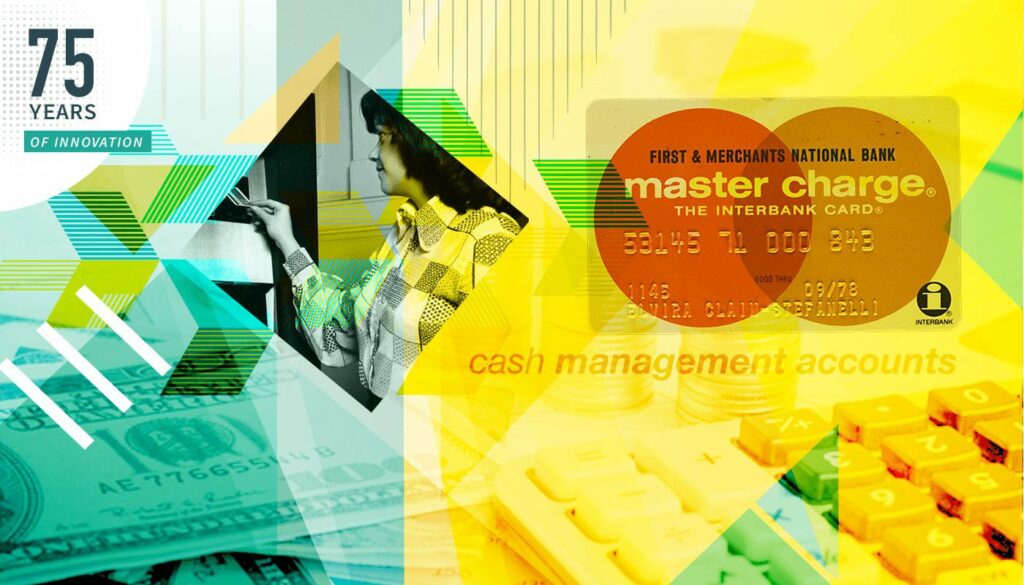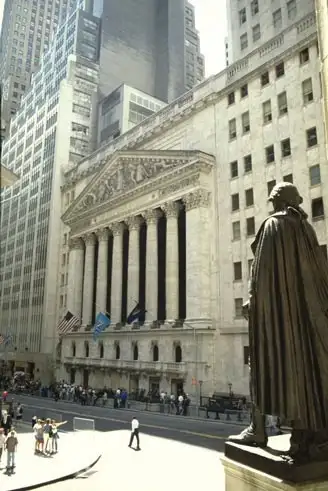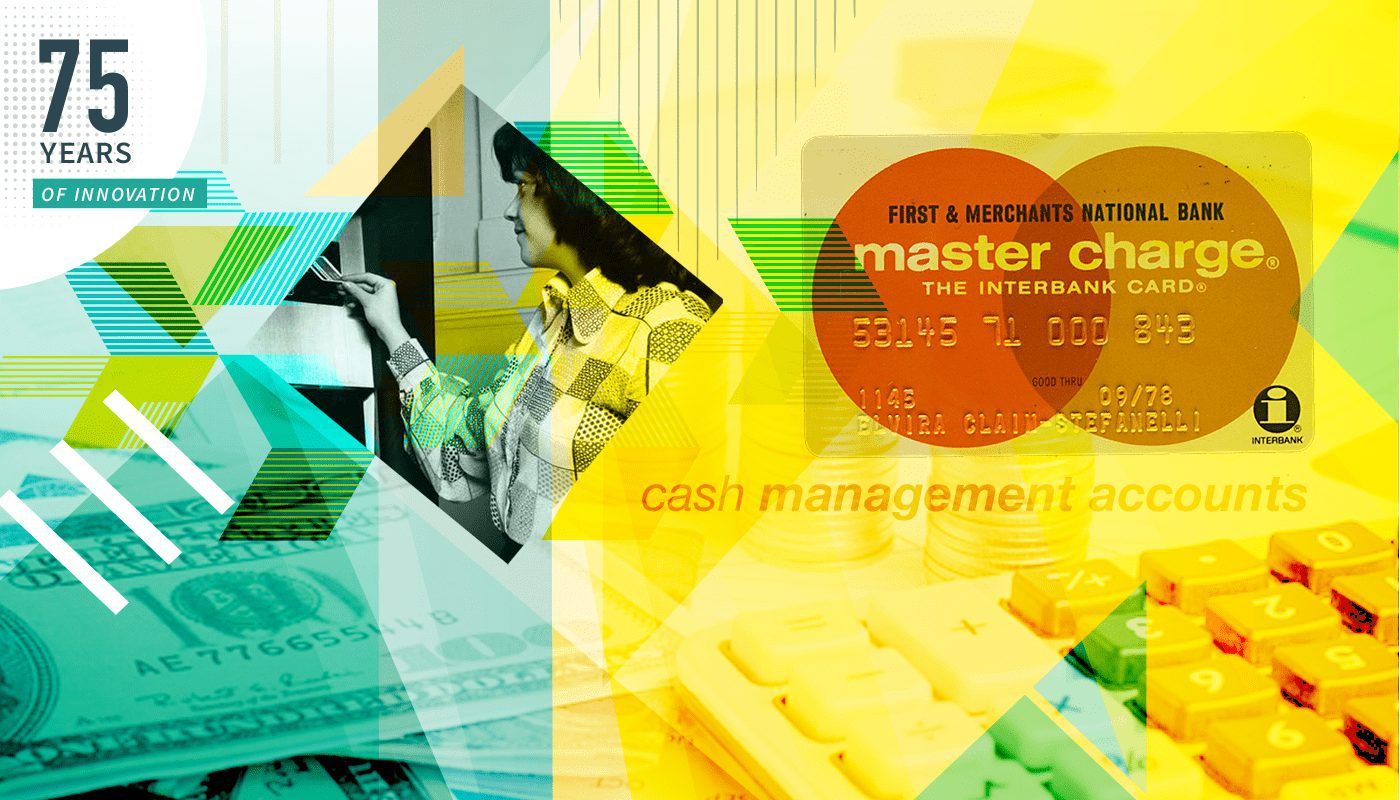The 75 Years of Innovation series highlights the groundbreaking innovations spanning from SRI’s founding in 1946 to today. Each week, SRI will release an innovation, leading up to its 75th anniversary in November 2021.

World’s first cash management account (CMA) product to aggregate and streamline across financial products
Money makes the world go around but a CMA makes finances flow
In 1977, Merrill Lynch took a gamble with a concept known as a CMA (cash management account). This blending of banking and broker services into a one-stop-shop for financial services was to revolutionize the industry and change the face of Wall Street and beyond. To achieve this, the firm turned to the expertise of SRI International and the discipline of Decision Analysis.
Making a decision on cash management as a financial strategy
The concept of a cash management account has many moving parts, including legal considerations, financial products and customer interactions and expectations. A mathematical model known as “Decision Analysis” (DA) looked to be the answer. The building of a cash management account fell on the doorstep of Dr. Carl Spetzler, Director of the Financial Industries and Strategic Methodologies Center at SRI International. Dr. Spetzler specialized in the discipline of Decision Analysis. In 1975, Spetzler wrote a paper on the technique entitled, “Probability Encoding in Decision Analysis”. The paper discussed the method of ‘probability encoding’ to convert specialized or general knowledge into probability distributions to represent the judgments of an expert. In other words, it is a way of quantifying and qualifying an expert’s views on the outcome of an action. Applying the tenets of DA allows for an informed comparison of alternative pathways in decision-making to achieve an optimized result.

In 1974, Charles Anderson, then President of SRI International, suggested that Spetzler’s knowledge in Decision Analysis could provide an interesting view of financial management. The story goes that when Dr Spetzler discussed the idea with Merrill Lynch the company was originally skeptical. However, Merrill Lynch was already an innovator in financial services and had experienced success in trying out different methods to its competitors; this included using a network of 15,000 financial advisors as opposed to independent brokers, perhaps an early sign that collaboration and aggregation of knowledge works well.
Merrill Lynch, along with Spetzler and his team, designed the cash management account (CMA) combining an investment account with a transaction account, adding in check-writing capabilities and a credit card. The latter were issued by a partner bank, Bank One. In the original guise, the CMA was a broker account tied to a money market fund. Cash balances were added to this account to maximize investor returns during periods of high interest rates. Using the money market fund, customers could draw down on the funds using the checking account. The flow and management of money between the two gave the customer greater flexibility in their use of financial products.
A cash management account became a movement
By 1981, 4-years after release, there were 300,000 CMA accounts. By the mid-1980s, there were more than 1 million customers using CMAs. At the end of 2000, Merrill Lynch alone had more than 2.5 million CMA accounts with aggregate assets of approximately $660 billion.

The concept of the CMA launched many similar products amongst Merrill Lynch’s competitors. The benefits of simplification and aggregation of services and products tempting others in the industry to innovate around the CMA movement. Aggregate accounts meant easy payments; the idea of a ‘’family account’’ appeared, combining multiple insurance products, including automobile or homeowner policies, allowing customers to make single monthly payments using the same computer system. More and more financial services and banks joined the move to financial account simplification, management and aggregation; SRI and Merrill Lynch had started a wave of change that we still benefit from today.
The push to simplification of money and financial services continues. FinTech’s and challenger banks, along with regulations such as PSD2 (Payment Services Directive, administered by the European Commission), are coming together to build simpler ways of managing money and making the most of collective financial products. The customer experience is seen as the key pivot to innovation. New initiatives such as Open Banking — or “open bank data”, can be used to aggregate multiple bank accounts on a single mobile app, offering a modern way to take the ideology behind the CMA into a new era.
In 2006, SRI International added Spetzler into our Alumni Hall of Fame for his work in Decision Analysis and his help in the development of the CMA.
Resources
ABA Banking Journal, 25 Years Later Merrill’s CMA Is Still Making Waves: https://www.questia.com/library/journal/1G1-106650225/25-years-later-merrill-s-cma-is-still-making-waves
CS Monitor, Merrill Lynch comes to golfers’ rescue, July 1981: https://www.csmonitor.com/1981/0714/071437.html
Carl S. Spetzler, Carl-Axel S. Staël Von Holstein, (1975) Exceptional Paper — Probability Encoding in Decision Analysis. Management Science 22(3):340–358. https://doi.org/10.1287/mnsc.22.3.340
SRI International Alumni Hall of Fame: https://archive.sri.com/about/alumni/alumni-hall-fame-2006
Merrill CMA Fact Sheet: https://mlaem.fs.ml.com/content/dam/ML/pdfs/ml_cma-fact-sheet.pdf



